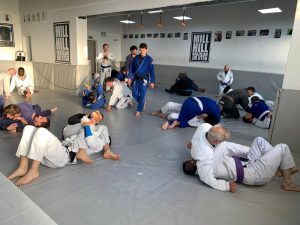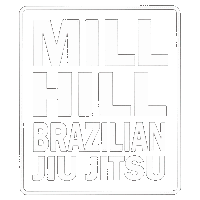
Stepping onto the mats for your first Brazilian Jiu-Jitsu (BJJ) class can feel both exciting and a little intimidating. Understanding what to expect can help you feel more prepared and make your first experience enjoyable. This guide breaks down the essentials, giving you an insight into the structure of a typical class and tips for starting your journey.
Why Start Brazilian Jiu-Jitsu?
Brazilian Jiu-Jitsu is a martial art that combines self-defense, fitness, and mental discipline. It’s accessible to all fitness levels and body types, making it an ideal choice for anyone seeking physical and personal growth. Beginners often find that BJJ not only enhances their fitness but also builds confidence and resilience.

What to Bring and Wear
Before your first class, ensure you have the basics:
- Clothing: Most schools provide a gi (BJJ uniform) for beginners, but wearing athletic clothing like a rash guard and shorts is also acceptable.
- Hygiene: Trim your nails, tie back long hair, and remove jewelry to ensure safety and cleanliness.
- Water Bottle: Stay hydrated throughout the session.
What Happens in a Typical Class
BJJ classes are structured to cater to students of all levels, with beginners learning alongside more advanced practitioners. Here’s what a typical session might look like:
1. Warm-Up
Classes start with a warm-up to prepare your body for training. This might include jogging, shrimping (a movement fundamental to BJJ), and breakfalls. Warm-ups are designed to improve your mobility and help you become familiar with basic movements.
2. Technique Instruction
The instructor will demonstrate a technique or sequence of moves. These could range from takedowns to submissions, depending on the focus of the class. Pay close attention during this time, and don’t hesitate to ask questions if something is unclear.
3. Drilling
You’ll partner with another student to practice the techniques shown. Repetition is key in BJJ, and drilling helps you build muscle memory. Your partner will likely be a supportive peer, making this an excellent opportunity to learn and improve.
4. Sparring (Rolling)
Many classes conclude with sparring, often called rolling. This is a live practice session where you apply techniques in a controlled environment. For beginners, sparring might feel overwhelming, but it’s an invaluable way to learn and test your skills.
5. Cool Down
After sparring, the class typically ends with stretching or a light cool-down. This is a great time to reflect on what you’ve learned and ask the instructor for tips.

Tips for Your First Class
- Be Open to Learning: BJJ is a skill-based martial art, and progress takes time. Focus on learning rather than comparing yourself to others.
- Communicate with Your Partner: Let your training partner know you’re new, and they’ll often adjust their approach to help you.
- Pace Yourself: It’s normal to feel tired during your first few classes. Listen to your body and take breaks as needed.
Benefits Beyond the Mats
BJJ offers more than just physical benefits. It helps reduce stress, builds problem-solving skills, and connects you to a supportive community. Over time, you’ll notice improvements in your strength, flexibility, and mental focus, all while having fun.
Ready to Begin Your Journey?
Starting Brazilian Jiu-Jitsu is an exciting step toward self-improvement and fitness. At Mill Hill BJJ, we welcome beginners with open arms and provide a supportive environment for learning.
Join us for your first class and experience the transformative power of Brazilian Jiu-Jitsu. Sign up today and take the first step on your journey.
